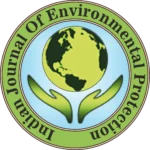IJEP 43(13): 1268-1272 : Vol. 43 Issue. 13 (Conference 2023)
Arun Kumar Parashar1*, Vipin Mahadeven2, Hanumant Sharan Singh3 and Nakul Gupta1
1. GLA University, Department of Civil Engineering, Mathura – 281 406, Uttar Pradesh, India
2. Rajkiya Engineering College, Department of Civil Engineering, Azamgarh – 224 122, Uttar Pradesh, India
3. Maharishi University of Information Technology, Department of Civil Engineering, Lucknow – 226 013, Uttar Pradesh, India
Abstract
The technology behind geopolymer mortar allows for the creation of mortar made from recycled materials that are less harmful to the environment. High-temperature curing treatment is required for typical GGBS based geopolymer mortar in order to achieve acceptable early strength characteristics; this is a significant constraint for cast-in-place mortar applications. Pre-hardened by heat curing, the characteristics of geopolymer mortar have been the primary focus of most past research. Geopolymerization reactions might produce stronger results if they are cured for longer and at the ideal temperature. Thus, geopolymer mortars based on ground granulated blast furnace slag (GGBS) were made by curing them at 60, 80 and 100°C for 6, 12 and 24 hr, respectively. Sodium silicate and sodium hydroxide solutions served to activate the GGBS. Sodium silicate and alkaline activator were mixed at a ratio of 1:3. In this case, the data demonstrate that curing at 100°C for 24 hr provided the best compressive strength.
Keywords
Ground granulated blast furnace slag, Heat curing, Ambient curing, Regression analysis, Compressive strength
References
- Madheswaran, C.K., G. Gnanasundar and N. Gopa-lakrishnan. 2013. Effect of molarity in geopolymer concrete. Int. J. Civil Structural Eng., 4(2): 106-115.
- Jayarajan, G. and S. Arivalagan. 2021. An experimental studies of geopolymer concrete incorporated with flyash and GGBS. Mater. Today Proceedings. 45: 6915-6920.
- Sharma, P., M. Verma and N. Sharma. 2021. Examine the mechanical properties of recycled coarse aggregate with MK GGBS. IOP Conference Series: Mater. Sci. Eng., 1116(1): 012152.
- Sanni, S.H. and R.B. Khadiranaikar. 2013. Performance of alkaline solutions on grades of geopoly-mer concrete. Int. J. Res. Eng. Tech., 2(11): 366-371.
- Aliabdo, A.A., M.A. Elmoaty and H.A. Salem. 2016. Effect of water addition, plasticizer and alkaline solution constitution on flyash based geopolymer concrete performance. Constr.Building Mater., 121 : 694-703.
- Gupta, A., N. Gupta and K.K. Saxena. 2022. Experimental study of the mechanical and durability properties of slag and calcined clay based geopo-lymer composite. Adv. Mater. Processing Tech., 8(sup2): 655-669.
- Esparham, A. and A.B. Moradikhou. 2021. Factors influencing compressive strength of flyash-based geopolymer concrete. Amirkabir J. Civil Eng., 53(3): 21-21.
- Kishore, K. and N. Gupta. 2021. Mechanical characterization and assessment of composite geopo-lymer concrete. Mater. Today: Proceedings. 44:58-62.
- Rao, G.M. and T.D. Gunneswara Rao. 2015. Final setting time and compressive strength of flyash and GGBS-based geopolymer paste and mortar. Arabian j. sci. eng.,40: 3067-3074.
- Parashar, A. K., et al. 2023. Investigation on the properties of GGBS based geopolymer mortar with the inclusion of calcined clay. Adv. Mater. Processing Tech., 1-12.
- Shi, X., et al. 2022. Response surface methodology for multi-objective optimization of fly ash-GGBS based geopolymer mortar. Constr. Building Mater., 315: 125644.
- Sharma, N. and P. Sharma. 2021. Effect of hydrophobic agent in cement and concrete: A review. IOP Conference Series : Mater. Sci. Eng., 1116(1): 012175.
- Lekshmi, S. and J. Sudhakumar. 2022. An assessment on the durability performance of flyash-clay based geopolymer mortar containing clay enhanced with lime and GGBS. Clean. Mater.,5: 100129.
- Parashar, A. K. and A. Gupta. 2021. Investigation of the effect of bagasse ash, hooked steel fibers and glass fibers on the mechanical properties of concrete. Mater. Today : Proceedings. 44: 801-807.
- Saif, M.S., et al. 2022. Impact of Ca2+ content and curing condition on durability performance of metakaolin-based geopolymer mortars. Case Studies Constr. Mater., 16: e00922.
- Vijai, K., R. Kumutha and B.G. Vishnuram. 2010. Effect of types of curing on strength of geopolymer concrete. Int. J. Physical Sci., 5(9): 1419-1423.
- Noushini, A. and A. Castel. 2016. The effect of heat-curing on transport properties of low-calcium flyash-based geopolymer concrete. Constr. Building Mater., 112: 464-477.
- Muhammad, N., et al. 2019. Effect of heat curing temperatures on flyash-based geopolymer concrete. Int. J. Eng. Tech., 8(1.2):15.
- Zafar, I., et al. 2022. Reactivity of aluminosilicate materials and synthesis of geopolymer mortar under ambient and hot curing condition. Adv. concrete constr.,13(1): 71-81.
- IS 383.1970. Specification for coarse and fine aggregates from natural sources for concrete. Bureau of Indian Standards, New Delhi.
- IS 1199. 1959. Methods of sampling and analysis of concrete. Bureau of Indian Standards, New Delhi.
